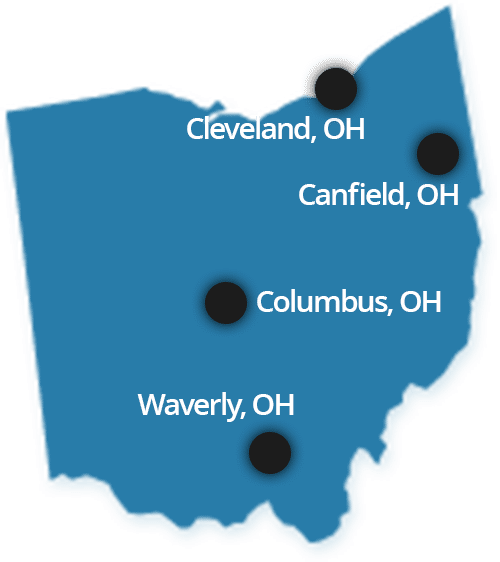When you’re hurt on the job, workers’ compensation benefits can be a lifeline by covering your medical bills, lost wages, and any necessary rehabilitation. However, if you have a pre-existing health condition (and an estimated 19 to 50% of Americans do), it can complicate the process.

When combined, pre-existing conditions and workers’ compensation coverage create a challenging situation because it’s often difficult to prove whether a work injury caused new symptoms or made your health worse. In this article, we’ll explain what pre-existing medical conditions are, how they influence workers’ comp claims, and what steps you can take if you find yourself in this situation.
What is a Pre-existing Condition?
A pre-existing condition is any injury, health issue, or disease that a worker had before experiencing a workplace injury. This could include conditions with clear documentation, like a past knee injury, as well as conditions that are harder to identify or measure, such as arthritis, asthma, or degenerative disc disease.
Workers’ compensation claims involving a pre-existing injury or occupational illness raise questions for insurance companies and employers. Specifically, they want to know if the new injury is genuinely work-related or if it simply aggravated an old issue. This analysis can impact the benefits awarded, the type of treatment covered, and even the long-term support a worker might receive.
To better understand how pre-existing conditions affect workers’ compensation, let’s explore common examples that could complicate a claim:
- Asthma: Take the example of a factory worker who has asthma. Their condition might be stable outside of work, but repeated exposure to dust, chemicals, or other irritants in the workplace can trigger flare-ups or cause severe breathing issues. In such cases, workers’ comp might cover the aggravated asthma symptoms if they’re worsened by work exposure.
- Chronic Back Pain: Many people have some form of back pain due to a previous injury, age, or genetic factors. If an employee with pre-existing back pain suffers further injury from lifting heavy objects at work, it could aggravate their physical condition, making them eligible for workers’ comp benefits.
- Carpal Tunnel Syndrome: Office workers and assembly line employees often develop carpal tunnel syndrome from repetitive hand movements. If a worker already has this condition and then performs a task that worsens it, such as prolonged typing or assembly work, they may be entitled to benefits for the exacerbated condition.
- Arthritis: Workers with degenerative arthritis may find it challenging to perform repetitive tasks, lift heavy objects, or stand for long periods. If a workplace incident or repetitive strain further damages the affected joints, it could lead to increased pain, swelling, and reduced mobility. Workers’ comp might cover necessary treatments, and even assistive devices if the work environment aggravated the arthritis.
- Mental Health Conditions (Depression or PTSD): Mental health conditions, including depression, anxiety, and post-traumatic stress disorder (PTSD), are often harder to assess but can still play a significant role in a workers’ comp case. Benefits may cover therapy, counseling, and medication if the work incident injury aggravated these mental health issues.
The key factor in all these cases is whether work activities worsened the condition enough to warrant additional medical care and cash benefits. It’s the main reason why a pre-existing condition and workers’ compensation can be such a difficult situation to resolve.
When Does Workers’ Compensation Cover Pre-existing Conditions?
Generally speaking, workers’ compensation benefits do not cover pre-existing conditions in their original state. However, if a work-related incident aggravates a pre-existing condition, benefits may apply. This includes compensation for medical expenses, treatment, rehabilitation, and partial wage replacement for the period the worker is unable to perform their job.
To be eligible, you must prove that the aggravation or exacerbation of the condition was directly tied to your work. For example, if you have degenerative disc disease, you might experience more pain after lifting heavy equipment on the job, which could make you eligible for compensation for this new level of injury.
Proving Aggravation of a Pre-Existing Condition
Proving that a work-related activity worsened a pre-existing condition can be challenging. Employers and insurers may argue that any new symptoms or pain are solely due to the pre-existing condition and not related to work activities. To establish a connection, a claimant typically needs:
- Detailed Medical Records: Medical treatment records that clearly document the previous condition, as well as how it worsened after the on-the-job injury, can be compelling evidence.
- Objective Diagnostic Tests: Imaging tests like X-rays, MRIs, or CT scans are useful in showing physical changes or worsening symptoms following a workplace incident.
- Statements from Medical Professionals: Doctors’ notes explaining how work activities contributed to the injury’s aggravation can help establish a link between work and the worsened medical condition.
Collecting the right evidence can make a big difference. In many cases, workers with pre-existing conditions find it beneficial to consult a lawyer who can help gather this documentation and build a strong case.
Key Challenges in Workers’ Compensation Claims with Pre-Existing Conditions
Pre-existing conditions can complicate a workers’ compensation claim in several ways. This is because they often lead to greater scrutiny, create evidentiary challenges, and can even impact the level of benefits received. Further, there is a higher standard necessary to prove that a pre-existing condition has been aggravated. In Ohio, you can not simply demonstrate that it has been aggravated, but instead you must show that there has been a “substantial aggravation” by means of objective evidence (such as an MRI) that confirms the increased symptoms.
Here are some of the most common obstacles injured workers may face:
- Increased Scrutiny from the Ohio BWC: The Ohio BWC is known for seeking reasons to deny or reduce payouts. They may argue that the worker’s current symptoms are due entirely to their pre-existing condition rather than a work-related injury.
- Difficulties Proving Causation: Many pre-existing conditions, such as arthritis or chronic back pain, have symptoms that could be mistaken for general aches or pains. This similarity makes it harder for the worker to prove that the work-related accident or task worsened their condition, rather than natural progression or outside factors.
- Potentially Reduced Benefits: Workers’ compensation typically only covers the portion of the condition directly attributable to the workplace injury. For instance, if an employee has a long-standing back issue that worsened after lifting a heavy object at work, benefits may only cover the “incremental” worsening of the back pain, leaving them with out-of-pocket expenses for the rest.
Tips for Filing a Successful Workers’ Compensation Claim with a Pre-existing Condition
To maximize your chances of success, keep these best practices in mind:
- Be Transparent about Your Medical History: Claims adjusters often review extensive medical records, including past health issues, to check for consistency. If there’s any indication that a condition was hidden, the insurer may question the worker’s credibility overall, making them more likely to scrutinize every detail and potentially deny the claim.
- Stick to the Facts: You must provide consistent and accurate information when detailing your injury and symptoms. Avoid exaggerating or downplaying details; instead, focus on objective descriptions. Insurers are on the lookout for any inconsistencies in an attempt to discredit the claim, so following these practices can help.
- Explain Worsened Symptoms: Instead of vague descriptions like “the pain got worse,” be as specific as possible. For instance, you might explain, “After the work incident, my back pain increased significantly, and I now experience shooting pain down my left leg when standing.” Details like these help clarify the scope of the injury and demonstrate that it’s distinct from your original condition.
- Gather Strong Medical Documentation: Inform your doctor that you’re pursuing a workers’ compensation claim and need documentation linking the work activity to your worsened condition. Ask them to note changes in symptoms, objective findings from exams or tests, and their professional opinion on how work factors contributed to the exacerbation. Clear medical support can be decisive in your claim’s outcome.
How a Workers’ Compensation Attorney Can Help with Pre-Existing Conditions
Obtaining workers’ compensation benefits when you have a pre-existing condition can be difficult, but an attorney can provide the guidance and assistance you need. Here’s how:
- Collecting Evidence for Causation: One of the toughest parts of filing a claim with a pre-existing condition is proving a direct link between a workplace accident and the aggravated condition. A workers’ comp attorney can work with medical experts, review prior records, and build a case that shows how the job worsened the health issue.
- Negotiating with Insurers: Insurers may deny or underpay claims involving pre-existing chronic conditions. A skilled workers’ compensation lawyer can negotiate with the insurance provider on your behalf and work to secure fair benefits for you.
- Representing You in Appeals: If your claim is denied or benefits are reduced, an attorney can help you file an appeal and represent you in hearings. Experienced workers’ comp lawyers know how to present evidence in court and can advocate for your rights throughout the appeals process.
- Offering Ongoing Support and Guidance: The workers’ comp process can be confusing, especially for those dealing with medical issues. An experienced workers’ compensation lawyer can answer questions, provide updates, and offer reassurance during the case.
Securing workers’ compensation benefits with a pre-existing condition can be challenging, but it’s far from impossible. With the right steps, injured workers can secure the support they need for recovery.
Speak to an Ohio Workers’ Compensation Lawyer Today
The success of any workers’ compensation claim depends on proving that you were injured on the job. When a pre-existing condition complicates the claim, legal representation may be necessary to overcome the insurance carrier’s objections and win the benefits you need.
At Plevin & Gallucci, our experienced workers’ compensation attorneys know how to prepare a solid workers’ comp claim and will fight aggressively on your behalf to negotiate a fair settlement. If your application is denied, we won’t hesitate to go to court for you. Don’t let a pre-existing condition keep you from the compensation you deserve: to schedule a free consultation, call our law firm at 855-4PLEVIN or fill out the contact form on this page, and we’ll be in touch.
Related:

